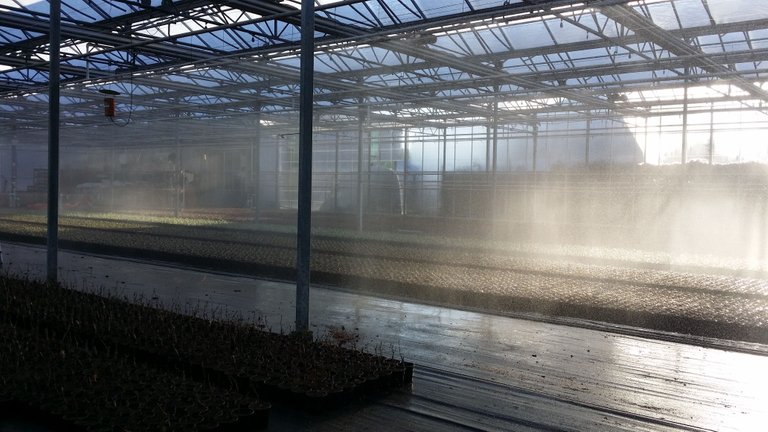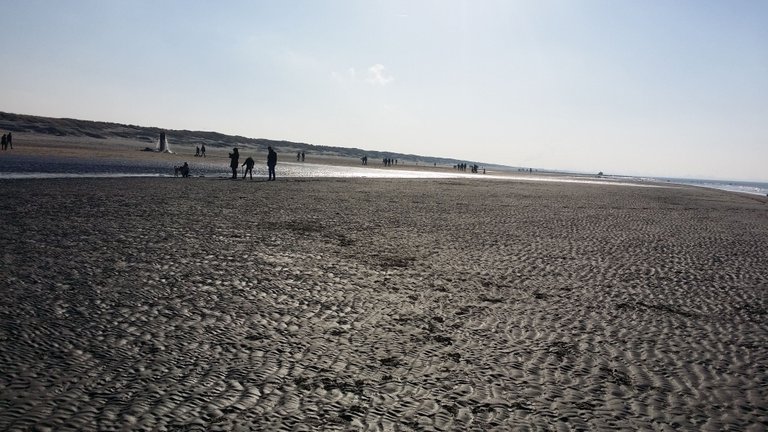Due to the experiences we had on New Year's Eve, 2018 started very intensively for us. In later weeks the number of adventures made it impossible for us to complain about boredom.
In February we were already faced with a new challenge, making our world trip preparations slightly more complicated. In the end we went out quite well. For two reasons: firstly, we have learnt from what happened to us, secondly, we got to known our behaviour better by acting in stressful situations - for sure we will not avoid this kind of situations during the few years of travelling. Currently, we are resting apart from each other in our home environment, dealing with the issues that we have to deal with in Poland and saving energy until the next stage - what you will find out from the next post (we'll tell you this time, we promise!). Meanwhile, we would like to offer you the opportunity to read this short post, or rather photoreportage, about our stay in a country famous for windmills, tulips and excellent cycling infrastructure!

The time which we spent in the Netherlands was: 1/3 sleep, 1/3 working, 1/3 study languages. It wasn't the most progressive period of our life, but during our work in the greenhouse we were able to study a little bit of knowledge about fruit trees and how to keep them alive and grow them at the same time :D. And when it comes to work, we managed to get a good job this time. When we have heard many stories about some employers in this "depressive" country, but we have to admit that, apart from some of the nuances in this work, we felt well there due to fantastic atmosphere. Our boss was a pretty decent guy and for a short period of our cooperation we will remember this time very warmly.





One-day cycling trip to The Hague
To break away from the daily routine, a week before our departure to Poland we went on a bicycle trip to The Hague. In comparison to other more beautiful cities in this country, the administrative capital of the Netherlands was quite unattractive. However, we can honestly admit that the museum of the Dutch graphic designer and painter Maurits Cornelis Escher was worth a visit.
It is said that the number of bikes in the Netherlands is higher than the number of people living in the country, which was 17.2 million people in 2016. The excellent quality of specially dedicated bicycle paths with a total length exceeding 35 thousand kilometers has probably contributed to this result. The views of such bicycle parking lots are not uncommon.
Quite a common view on Dutch roads is the presence of old, historic cars. Cars older than 25 years of age are exempt from wegenbelasting (road taxes). While we were walking around the residential estates, we noticed this marvelous van!


If you don't like the taste of the Dutch herring, and you're not also fond of frikandel, we recommend that you go to Hague's Chinatown. You will find there a wide range of restaurants specializing in various Asian cuisine...
...from which we chose Indonesian cuisine. Unfortunately, saté (grilled on the charcoal shashlik in delicious peanut sauce) and another salad weren't caught on the photo! We barely managed to leave the restaurant, overwhelmed by the weight of our stomachs.
The Wilhelm I Orange Monument at Het Plein in The Hague. Wilhelm was the leader of the troops fighting with Spain for the independence of the province. After this event, he became the King of the Republic of the Seven United Provinces.
Escher Museum
Escher became famous for his woodcuts, lithorites and drawings depicting any optical illusions or unusual exposition of the perspective. In his work, the artist did not aim to show beauty, but rather to surprise the viewers and play tricks with them. Most of his works seem quite logical and simple at first glance, but after a while we see that "something is wrong". The artist in a clever way uses the trait of our mind to constantly search for meaning in what it sees. However, when we start to analyze and look at the relations of objects in his work a little more closely, we can see a lot of paradoxes. Escher was inspired by mathematics, geometry, impossible figures, and especially infinity and symmetry. When he had became inspired by Islamic art, he started to explore the tessellation effect which you can see in many of this works.

.JPG)
.JPG)
.JPG)
.JPG)
.JPG)
.JPG)
.JPG)
.JPG)
.JPG)
.JPG)
.JPG)
.JPG)
.JPG)
.JPG)
.JPG)
.JPG)
.JPG)
.JPG)
.JPG)
.JPG)
.JPG)
.JPG)
.JPG)
.JPG)
.JPG)
.JPG)
.JPG)
.JPG)
.JPG)
.JPG)
.JPG)
.JPG)











.JPG)
.JPG)
.JPG)
.JPG)
.JPG)
Congratulations! Your high quality travel content caught our attention and earned you a reward, in form of an upvote and resteem. Your work really stands out. Your article now has a chance to get curated and featured under the appropriate daily topic of our Travelfeed blog. Thank you for using #travelfeed
Wow, thanks you @travelfeed, that's an honour! :)
good your post, i like this
Escher Museum seems really intresting. Liked looking at the Artphotos! thx :)
Thanks for coming by!
Upvoted! love the work you put in! happy travels to you and hope you enjoy every minute, happy to hear the Netherlands was good to you, I am Dutch in Amsterdam, traveled fro four years and post about, thinking about my next move.
all the best to you
Wish you best fellow traveller :)
Thanks guys, lets travel as much as we can! and again goodluck with preparing for this great trip
As they say, life is either a daring adventure or nothing
Words of wisdom!